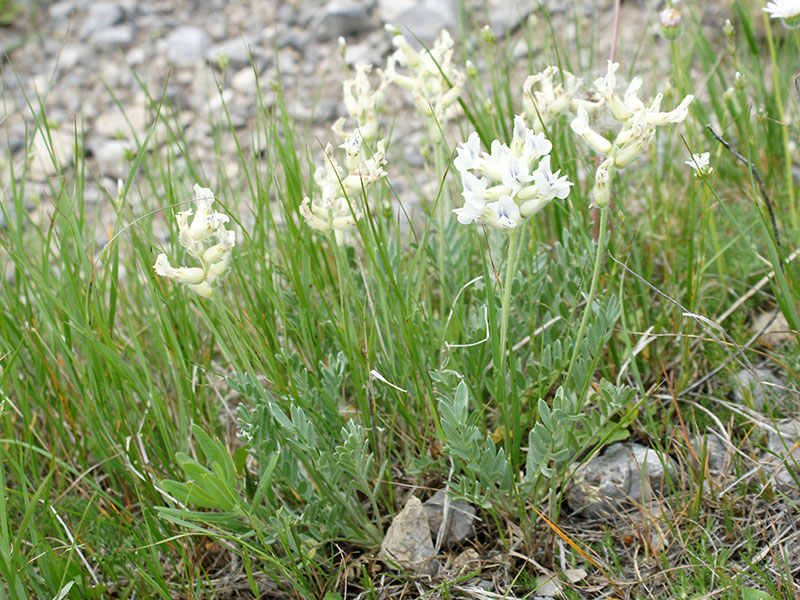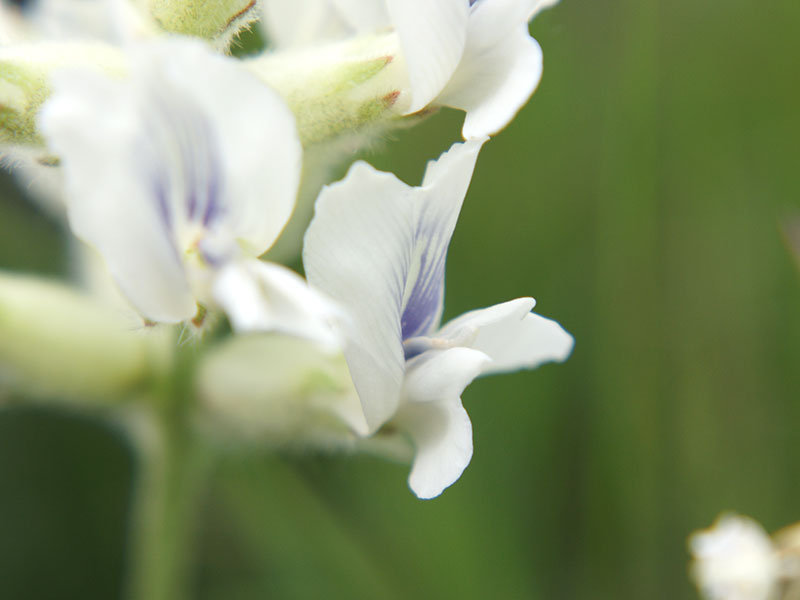Oxytropis sericea / white-point vetch
- white “pea” flowers in clusters of up to 25
- banner petal white with purple/blue veins
- hairy, pinnately compound leaves, all basal
- disturbed areas, especially exposed to cold, drought, high light etc.
- pretty, but toxic to grazing animals
Also known as: white locoweed, whitepoint crazyweed, silky crazyweed, Rocky Mountain locoweed, silky locoweed
White-point vetch is a perennial herb. It grows from a large taproot. It may get up to a foot tall. Each individual plant can produce seven flowering stalks, each of which has up to 25 flowers. The flowers occur in spike-like clusters (racemes) held just above the basal leaves on long pedicels (stalks)
Seen close up, the flowers are really beautiful. Each is about an inch long. The banner – the large petal at the top of a “pea” flower – is white and, in the photos here, has numerous blue/purple veins (stripes). The lower petals that flare out like wings – and are called wings – are white, notched and bluntly pointed. The calyx is about 1/2-inch long, each sepal having dark-tipped teeth and light or dark hairs.
White-point vetch leaves are at the base of the plant. Each is pinnately divided into 11-17 elliptical leaflets, ranging from 1/2 to 1-1/2 inches long. They appear grey because they are covered with dense, flat, silky hairs. This is probably an adaptation to living in bright sun in otherwise stressful habitats, reflecting light and reducing excess light absorption.
Like other members of the family, white-point vetch produces seeds in pods. The pods are short and hairy, less than 1″ long. They are fleshy when green but the pod wall hardens and gets quite thick when the seeds are mature. The seeds are also hairy and tough, helping them survive in the soil for years, despite cold, exposure and desiccation.
Depending on elevation, Oxytropis sericea may be one of the earlier plants to appear in the spring. It is especially found in disturbed communities, and can establish itself on rangeland or even mature, climax plant communities. It doesn’t mind full sun, dry exposures high on hills. It is well adapted to a variety of stresses including low temperatures, desiccating effects of winds, poor soils and intense light.
Interesting bits – There are a number of “locoweeds” and they occur, in North America, in two genera, Oxtropis and Astragalus. They derive their names from a characteristic syndrome associated with the toxicity of one of their component chemicals, swainsonine. This causes chronic neurological damage and can kill livestock if they consume large amounts for 1 to 3 months. Signs of poisoning appear earlier, however, after 2 to 3 weeks of continuous grazing.
Interestingly, although animals seem to know how to avoid toxic plants in general, especially if alternatives are available, cattle and sheep will readily graze white-point vetch, even seeking it out. Indeed, even becoming apparently addicted to it. Horses will also eat it and are more severely affected. And once poisoned, horses won’t recover. Deer and elk may also be affected, especially in the spring before ample grass is available.
| Color | |
|---|---|
| Family | |
| Blossom size | |
| Inflorescence size | |
| Inflorescence type | |
| When? | |
| Where? |



